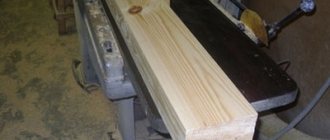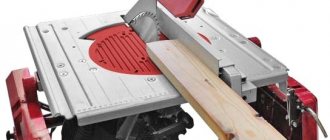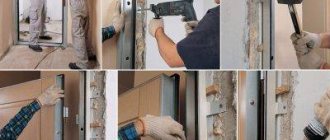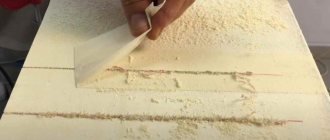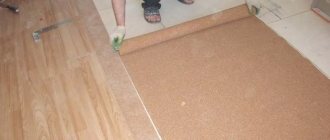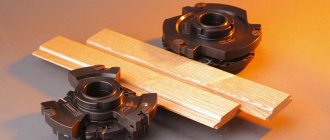Very often, when doing electrical installation work, it is impossible to do without a vacuum cleaner.
This is primarily due to the processes of wall gating. You cannot use homemade household models for this task, otherwise you will ruin them on the very first day of work. Their dust collectors will fill up very quickly, and the vacuum cleaner itself will overheat.
Only professional craftsmen who earn a daily living from this type of activity can afford to buy a construction equipment, which costs quite a lot of money.
But what if you are not a builder and you only need such a device to complete electrical repairs in your apartment? In this case, there is only one optimal solution - to make a construction vacuum cleaner yourself from an ordinary one.
Moreover, such a change will only take you a few minutes. And the materials that are required for this can be easily found in the pantry, or purchased in addition at the nearest plumbing store.
Let's take a closer look at two very similar methods, which nevertheless have structural differences between each other.
Homemade cyclone from a household vacuum cleaner
The first method has been presented on the Internet and on YouTube for quite some time. You can easily find many videos with similar homemade cyclones.
However, they raise quite natural questions and skepticism among professional builders. Therefore, it should be noted right away that they are mostly suitable for removing wood chips.
But it is better not to work with cement dust with such devices. The second option is more tailored to it.
The main “trick” that will allow you to easily suck in kilograms of garbage, wood, and metal filings and not worry about frequently changing filter bags is a homemade “separator”.
It will then need to be constructed from several components. For the entire assembly you will need:
- regular vacuum cleaner
- thick plastic bucket with lid
A bucket of Shitrok putty is best suited here. It is harder to flatten it with a vacuum.
- plastic sewer pipe d-40mm
- polypropylene sewer outlet at 90 degrees with a diameter of 40mm
- 40mm crown or utility knife
First of all, drill or carefully cut a through hole for the tube in the center of the bucket lid.
Mark the third hole closer to the edges of the cover, where the stiffener is.
If you do not have a special crown, then first pierce the intended circle with an awl and carefully cut it with a stationery knife.
The edges will be uneven, but they can be processed with a round file.
Two sewer outlets are inserted into these holes. So that they hold securely and there is no additional air leakage, it is better to glue them.
To do this, first sand the edges of the tube with sandpaper or a file to create a rough surface.
Do the same operation with the lid.
After this, insert the tube into the inside of the cap and apply a thick layer of glue with a hot-melt gun.
Don't skimp on glue. This will help create a good seal in these places and tightly close all the cracks.
There is actually another option in which you can do without glue and fan pipes altogether. To do this, purchase rubber adapter couplings from Leroy Merlin.
They come in different diameters. Select according to the size of your hose.
For example, a tube from a 35mm hose is tightly inserted into a 40/32 coupling. But in a 40mm pipe it will dangle. We'll have to reel in something and collective farm.
On the tube that is located on the edge of the lid, place the sewer outlet at 90 degrees.
At this point, the separator design can be said to be almost ready. Install the lid with outlets on the bucket.
The air intake hose from the vacuum cleaner is inserted into the central hole.
And the piece that you will use to collect all the debris and dust is stuck into the corner joint.
It is desirable that the tubes contain sealing rings that match the size of the corrugated hoses of the vacuum cleaner.
This completes the entire assembly. You can plug in the vacuum cleaner and use it.
Here is a visual video of the inside of a bucket of a similar design. It clearly shows how sawdust is sucked into the separator, but cannot escape from it and get into the vacuum cleaner.
The operating principle here is as follows. Coarse dust sucked into the container falls to the bottom of the container. At the same time, it does not enter the area where air is pumped directly.
Three factors help in this matter:
- gravity
- friction
- centrifugal force
They then make the garbage rotate inside the bucket, pressing against its walls, and then fall to the bottom. And only the fine fraction goes directly into the dust collector of the vacuum cleaner.
Typically, such a cyclone in factory designs has the shape of a cone, but cylindrical specimens also often cope well with this task.
True, the higher the bucket, the better the installation will work. Much here depends on the correct combination of the design of the container and the power of the vacuum cleaner. Here is a sign from Chinese cyclones on the correct selection of hose diameter and unit power.
In cylindrical buckets, the tangential air flow enters not through the curved side wall, but through the flat lid. Assembling such a device is much easier.
Also, if you have several buckets, you can use them alternately. Just remove the lid from one and move it to the other. Moreover, this is even easier to do than in bulky cyclones.
Then, at the very end of the work, simply take out the filled containers at once. This is a great time saver.
If you have a powerful vacuum cleaner, instead of a plastic bucket for emulsion paint, it is better to use a metal tank of the same shape. Otherwise, the bucket will collapse and flatten it.
The power regulator helps in this matter. If, of course, it is present in your model.
Safety precautions
When making your own device, you can purchase factory-type parts and spare parts to save time and effort. But when installing filters, it should be taken into account that HEPA filters are not suitable for a homemade device, since such products can trap small dust particles in the pores of the filter itself. All this leads to the filling of filters with debris, and, consequently, the suction power will gradually decrease. The filter will be impossible to clean, since it will be difficult to blow out the dust, and when washed off, a rotting process may occur. Bacteria can also develop and cause an unpleasant odor during operation.
Why does the vacuum cleaner still fail?
With this method, all the fine dust will enter the vacuum cleaner bag, and more or less large fractions will simply settle and remain in the bucket. As do-it-yourselfers assure, more than 95% of construction waste settles in the separator and only 5% goes directly into the dust collector of a household vacuum cleaner.
However, the thing is that even this 5% can gradually kill the vacuum cleaner. In addition, even for industrial cyclones, the declared efficiency is rarely more than 90%, but what about home-made products, in which the aerodynamics are far from perfect.
For 100% collection of the fine fraction, an electric precipitator or bubble column is needed.
By the way, some types of dust cause very strong static voltage. Be careful when working.
The longer you work with the unit without unplugging it, the higher the charge may be. Here, read the instructive commentary of one real user of such a homemade product.
Therefore, on many cyclones, even factory-assembled ones, the flange is grounded.
Five percent of fine wood chips is certainly not dangerous for a household vacuum cleaner. What if it is fine cement dust during gating?
When such particles get inside, they clog the filter tightly.
And this happens very quickly. The entire efficiency of the “cyclone” drops by at least 2/3 within a matter of minutes.
The main problem is the dust bag. It is dense and the filtration area is small. Therefore, it is not suitable for waste from plaster and concrete walls.
What to do? Is it really impossible to do without a real construction project? During intensive work, only an expensive and professional tool really saves you.
Stages of work
Household vacuum cleaner
Many people do not understand how to assemble a vacuum cleaner from a household model. In fact, almost any modification with a power of 300 kW or more will do. A cyclone type device is selected. The most commonly used products are Samsung and Bosch. Before starting work, you need to make sure the strength of the camera and understand the design.
Advice! The container should be easy to remove, the number of filters should be taken into account.
It is possible to create a vacuum cleaner for a garage with your own hands without a casing, since the noise level does not matter. When considering installations for a private workshop, it is worth taking care of protecting the hearing organ. When considering household vacuum cleaner models, the motor is the weak point.
In terms of speed parameters and maximum voltage, they are incomparable with construction analogues. There is also another problem associated with element contamination. To collect concrete dust, you will have to insulate the vacuum cleaner components.
What is the difference between a construction vacuum cleaner and a regular one?
But for occasional work, this design can be slightly modified and improved. The idea belongs to Andrey Shayter.
Before we look at the second design option, ask yourself the question: “What is one of the main differences between household vacuum cleaners and construction vacuum cleaners?”
In domestic models, cooling occurs due to the intake air.
That is, you vacuum the floor, the air sucks in debris. Next, it is filtered and cooled by the engine itself. After which the air is thrown out.
This is where the risk of engine damage comes from. Firstly, when the filter becomes clogged, engine cooling drops sharply.
Secondly, cement dust is 100% not retained in the dust collector, and some of it flies through the windings, along the way removing the varnish insulation like sandpaper. Such dispersed dust kills everything that rubs and rotates.
Adding water to the bottom of the tank doesn't really help. Instead of dust, you will get a lot of dirt, the weight of the bucket, and the filters will still eventually become clogged.
In professional devices, the engine is cooled separately, through special technological holes. Therefore, they are not so afraid of bags completely filled with garbage.
Moreover, they also have automatic cleaning or shaking.
In order to intelligently remake a household model, you will need a little more spare parts than in the first case.
Design Features
First, you should warn against a common mistake: simple household devices cannot replace a real construction vacuum cleaner.
They have to be deeply redesigned and improved in order to achieve effective operation. Otherwise, the dust collector will constantly become oversaturated, and the device itself will quickly fail. In order for the device to work effectively, it is necessary to use components that create a strong vacuum at the input. The vacuum unit is driven by a high-power electric motor, sometimes even a pair of drives are used at once. Since repairs, construction, and dismantling of structures create much more dust than usual, the air has to be purified faster and more intensively. This places increased demands on both filters (their reliability, throughput) and hoses. The hose is attached to a pipe located in the housing. Dust particles and solid suspensions rush through the hose into a special container. To improve the quality of work, an additional filter must be installed at the outlet of the container.
Since more air moves in a construction vacuum cleaner, which in addition contains strong particles, sometimes inclusions with sharp edges, it should be more reliable than its household counterpart. The outer casing will have to be strengthened as much as possible. You will have to carefully select the motor so that it does not break due to increased load. The hose of a construction vacuum cleaner should also be stronger than a regular one. The location and compatibility of all parts are carefully thought out.
Cyclone-type construction vacuum cleaners have gained popularity. They are equipped with a pair of filters that retain particles of various fractions. This solution increases cleaning efficiency and reduces the frequency of filter maintenance. What is important is that cyclone devices create relatively little noise. Even if a valuable item accidentally gets inside, it will be very easy to find it.
Working version of a construction vacuum cleaner from a household one
The main additional element here is a filter bag made of non-woven material. Instances from Karcher are very suitable - article number 2.863-006.0
Actually, this filter is disposable. Your task is to make a reusable element out of it.
To do this, cut its lower part and fold it a little, slightly reducing the width (up to 22cm).
Next, this lower part needs to be closed with a special lid. You make it from two elements of a plastic cable channel and a piece of polypropylene pipe.
Saw the tube lengthwise, with a slot width of approximately 5mm.
Everything else is simple. Apply glue to the lids.
Apply them with the back side to the fabric at the bottom.
Then insert the prepared tube through the slot.
As a result, from a disposable one you have a reusable filter bag. Moreover, it is much larger than the one installed inside the household model.
Next, you go through the previously discussed steps to modernize the bucket. Drill holes in the lid and insert rubber corrugated adapters into them.
One will be for connecting the filter bag, the other will be for the hose. Select the sizes according to the diameters of your devices.
Here you can do without fan pipes and corners. Next, place the plastic insert from the reusable filter onto the adapter.
All that remains is to tightly close the lid on the bucket. The structure is ready for use.
Although it is similar, it differs from the first option above. After you turn on the unit and begin to suck in debris, it is the homemade reusable dust collector that will collect all the muck and dirt.
Dust will not fly around as in the previous case. On the contrary, this bag will swell inside the bucket due to the air flow.
Gradually it will be filled with both heavy and small fractions that could have been missed by the cyclone.
However, do not forget about clogging the walls of the reusable filter and reducing the draft of the cooling air flow. In order not to burn out the motor of a household vacuum cleaner, it is necessary to carry out one more action.
Tools and materials
Tool kit
Many DIYers don’t know how to make a vacuum cleaner. The work begins with the selection of tools and materials. Much depends on the type of design chosen and the workpiece layout. If we consider a cyclone type vacuum cleaner, the following tools are used:
- filter - 1 piece;
- bucket;
- metal corners;
- long flexible hose (suitable from the pool);
- household vacuum cleaner.
To process materials, a stationery knife, ruler, drill, pliers, a set of screwdrivers, and wire cutters are prepared.
Making a cyclone using plastic buckets
When assembling a cyclone filter from a bucket, 2 plastic paint containers with a volume of 10 liters are used as a base.
Material with tool
In addition to two containers, you will need: a plumbing pipe and an outlet with a diameter of 32 mm, an air filter for a car, plywood, iron roofing sheet, fasteners, corrugated tube, glue, silicone sealant. Tools required: knife, felt-tip pen, jigsaw, screwdriver, compass, hacksaw, awl, glue gun.
Assembly
The assembly process has the following order.
- Remove the lids from the buckets and cut one of the containers in half.
- Make a narrow box out of plywood and place a plumbing pipe inside so that it holds very tightly. Fill the empty space between the walls and the pipe with silicone sealant.
- Step back 7-10 cm from the edge of the bucket and use cardboard and a sheet of paper to make a template that exactly follows the bend of the side surface of the container.
- Place the template against the box and mark the bend.
- Using a jigsaw, cut the structure along the line along with the tube.
- Place the box against the wall of the container and use a felt-tip pen to mark the hole for the pipe from the inside (you need to make sure that the pipe is at an angle inside). Cut a hole and install the pipe.
- Place the box with the pipe against the cutout, use an awl to pierce holes in the container around the perimeter of the plywood, screw in the screws and secure the structure to the bucket. Fill the joints of the container and box with sealant.
- Step back 70 mm from the bottom of the bucket, measure the diameter of the circle, transfer the dimensions to the roofing iron and cut out the circle, and then cut it in half from the middle and spread the edges at an angle of 300°. The resulting shaped insert should be placed sideways in the container. It is designed to create a vortex flow of sawdust, tiny dust and shavings, as well as to transfer debris to a collection container (half of the second bucket).
- Cut off the bottom of the bucket with the tube and insert it into the storage tank.
- Cut a hole with a diameter of 32 mm in the lid of the bucket, into which insert a pipe 30 cm long, leaving a 7 cm long piece outside. The pipe must be glued and the cracks sealed with sealant.
- Attach a corrugated tube with a nozzle for removing debris to the side tube.
- Attach the vacuum cleaner hose to the section of pipe coming out of the cover. Place a universal car filter on the tube from the inside of the cap.
- Measure the diameter of the filter from the outside, cut out a tin plug of the appropriate size with three tongues. Fix three tin strips with bent upper ends onto them with rivets or screws.
- Attach the bent ends of the strips to the lid from the inside. Install the plug into the filter hole from below and seal it. That's it - the cyclone filter is assembled.
https://youtube.com/watch?v=nOO_PKw3pEs
Features of work
When the cyclone filter assembled in this way becomes clogged, it is pulled out of the garbage receptacle and thoroughly cleaned. It is recommended to service the car filter as often as possible, otherwise it will become completely clogged and cleaning efficiency will decrease.
Advice from professionals
The process of creating a homemade construction vacuum cleaner, as can already be seen, is relatively simple. But there are some subtleties that you need to know. So, when installing an air purifier on an angle grinder, you need to use a casing. To make it, use an aluminum pan or a suitable plastic product. It is only important to properly calculate the depth of immersion of the cutting disc into the material being processed.
A slightly different approach is needed when preparing a homemade vacuum cleaner for a CNC woodworking machine. Since a lot of sawdust is generated, a capacious barrel (from 100 liters) is required. If there is no ready-made barrel with suitable dimensions, simply make a plywood frame filled with cellular polycarbonate. The separator body is made up of rings cut with a milling compass. Important: the rings must be made of plywood, not fiberboard.
Sources
- https://stroy-podskazka.ru/pylesosy/stroitelnye/svoimi-rukami/
- https://ChistyjDom.ru/pylesos/samodelki/delaem-stroitelnyj-pylesos-svoimi-rukami/
- https://domikelectrica.ru/2-sposoba-kak-sdelat-stroitelnyj-pylesos/
- https://kliningovyj-raj.ru/tehnika-i-sredstva/pylesos-svoimi-rukami/
- https://PyleSOS.tech/promyslennyj-pylesos-svoimi-rukami.html
- https://stroy-podskazka.ru/pylesosy/svoimi-rukami/

